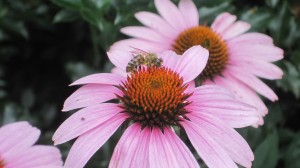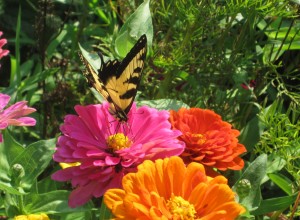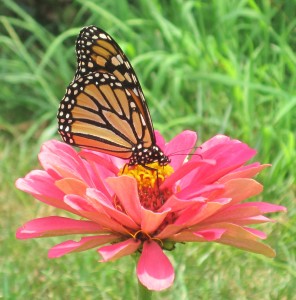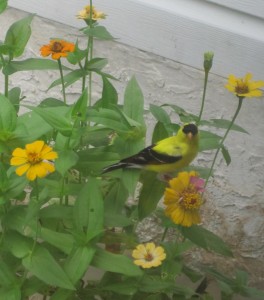The following changes are easy to make but collectively have a big impact, transforming your garden into a wildlife haven… while keeping it beautiful.
1. Buy perennials more than annuals, and favor native plants.
Research what is native to your county, state or region, and plant plenty of them. If there is a showier variety, that is usually OK, as long as you avoid double flowers, which are often spurned by butterflies and bees.
That is not to say I don’t have some annuals for instant color….Zinnias are adored by birds and butterflies alike…
…but if you favor perennials, you will reap the rewards. Have a look at the following web sites…
United States:
- A fabulously informative site is www.wildflower.org, where you can find which plants are native to your state, and then narrow down your choice by their color, when they bloom, how much light they need, and whether they need damp or dry places. www.plantnative.org is also good, as is plants.usda.gov
Canada:
United Kingdom:
- http://www.wildaboutgardens.org/ – a wonderful collaboration of the Royal Horticultural Society and the UK Wildlife Trusts
- Plantlife: The Wild Plant Conservation Charity
2. Look very seriously at the poisons you use in the garden.
Use home-made weed killers. One good one – although it kills every green thing it touches – is made by mixing a gallon of white vinegar, a cup of table salt, and a tablespoon of liquid dish soap. Even this will affect the soil if used too extensively.
Boiling water is a tedious but very effective way of killing plants on patios and gravel. Of course, it would be ecological nonsense to consume energy boiling water just for this. Instead, next time you’ve boiled a little too much water for tea, or you’ve prepared pasta and it’s ready to serve, use that waste water by tipping it into another container and using it to spread death and destruction against those pesky weeds.
Live with weeds in lawns or dig them up. I appreciate, however, from personal experience, that living with dandelions in a wide expanse of lawn can be…how shall we put it…a challenge…especially when all your neighbors cultivate uniformly green lawns.
3. Insects – a thoroughly diverse planting of perennials, especially natives, will shrug off pests. One conspicuous exception, in the United States, is the Japanese Beetle, a maddening invader from (guess where) which chomps leaves and flowers of hollyhocks, evening primroses, and roses. Have some fun going round in the early morning or late in the evening, when they are cool and dopey, and knocking them off into diluted washing up liquid. Pheromone traps just bring more into your yard.
4. Start a pond! You’ll get frogs and toads and newts and salamanders. Don’t stock it with goldfish if you can avoid it.
5. Compost your vegetable peelings and weeds. It makes for a healthier yard and less waste in landfill sites. Composting doesn’t have to be complicated. Place a pitcher or covered container by the kitchen sink and dump in all of your veggie food scraps. Add scrap paper and water-soaked paper towels if you are mopping up the kitchen. Then start a compost pile outside—in a bin if you want to keep it neat looking – by mixing these scraps with green stuff pulled up from your yard (do not add any weed seeds). After a few months – especially if you can stir the pile – it will be wonderful brown compost for the garden. Composting yard and kitchen waste can reduce the amount of household trash by three-quarters – – – so, free fertilizer, less landfill! See Composting At Home | US EPA.
6. Stop watering your lawn *quite* as much… then graduate to attacking your lawn. Until then, water at night, deeply and rarely (if you must) and mow high. Keep whatever mower you use well-serviced and the blades sharp. Makes for less pollution all round.
Good luck! Here is some further reading…
And register your back yard habitat!
Questions? Comments? E-mail me on johnnydogmatic@comcast.net
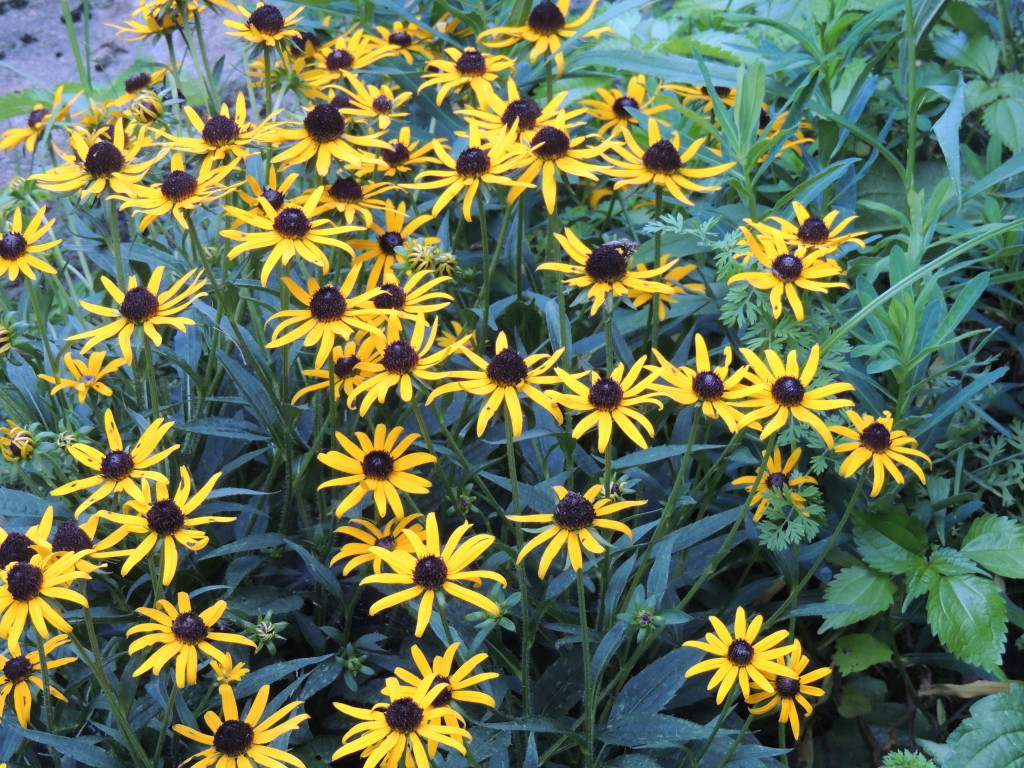
(Rudbeckia, AKA black-eyed susans, in the author’s own garden)
